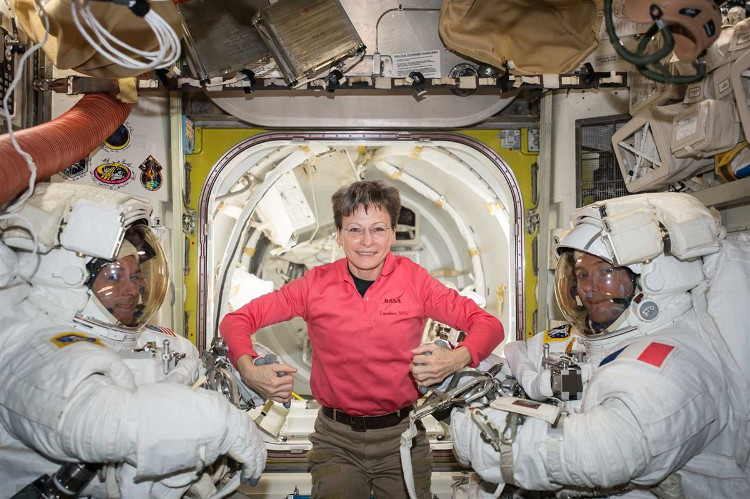Australia invented ultra-thin nanomaterials for many applications
The risk of radioactivity for astronauts going out into the air may soon become "the past story", after Australian scientists invented a super-thin nanomaterial that could be told. protect the surface against light and radiation.
The discovery is made by Australian National University (ANU) scientists published in the country's High-Performance Materials magazine on July 4.
This type of nanomaterial is capable of adjusting to reflect the visible or invisible light , thereby better protecting astronauts from solar radiation when they are outside aerospace.

Astronaut Peggy Whitson (center), NASA commander Shane Kimbrough (left) and engineer Thomas Pesquet (right) before "walking" outside the International Space Station (ISS) on April 24.(Source: EPA / VNA).
Dr. Mohsen Rahmani of ANU said that this material is so thin that it can apply hundreds of layers at once to any surface, including space suits.
According to Dr. Rahmani, this material can be used in a variety of applications such as protecting astronauts or protecting satellites with an adjustable ultra-thin membrane to reflect ultraviolet rays. Purple dangerous or infrared radiation in different environments.
He said the technology significantly increased harmful radiation resistance compared to current technologies, which rely on the principle of radiation absorption with thick layers of filter .
Researcher Andrey Miroshnichenko in the team said that the nanomaterials can not only reflect invisible light like infrared radiation, but also can block and transmit visible light, opening up possibilities in applications. Architectural works such as buildings, on windows or in stadiums.
He can, for example, turn a window into a bathroom mirror, or control the amount of light entering the house through the window depending on the season of the year.
- New invention of ultra-thin insulation
- Successfully developed ultra-thin electronics
- Nanotechnology and applications
- Solar cells are as light as soap bubbles
- Creating two-dimensional materials cannot be found in nature
- Detecting new carbon nanomaterials
- This is an ultra-thin wearable device that is implanted directly into the skin
- Ultra-thin battery with a thickness of less than 1mm
- Shocked with buildings 'can't be thinner' only in China
- Scientists seek to create ultra-thin keyboards that absorb light
- Japan develops ultra-thin thermometers with only 1/4 of the hair
- The device is about to be thin
 Daily use inventions come from universities
Daily use inventions come from universities Special weight loss device helps prevent appetite
Special weight loss device helps prevent appetite 8 inventors were killed by their own inventions
8 inventors were killed by their own inventions Iran invented a motor car powered by water
Iran invented a motor car powered by water Mutant creatures living in the Chernobyl exclusion zone
Mutant creatures living in the Chernobyl exclusion zone  First discovery of life-preserving magnetosphere outside the Solar System
First discovery of life-preserving magnetosphere outside the Solar System  Close-up of the process of 'making' cancer radiation therapy masks
Close-up of the process of 'making' cancer radiation therapy masks  New species of water bear reveals the secret of immortality
New species of water bear reveals the secret of immortality  Device for generating electricity at night from infrared radiation
Device for generating electricity at night from infrared radiation  Wild 'paradise' nearly 40 years after the Chernobyl nuclear disaster
Wild 'paradise' nearly 40 years after the Chernobyl nuclear disaster 